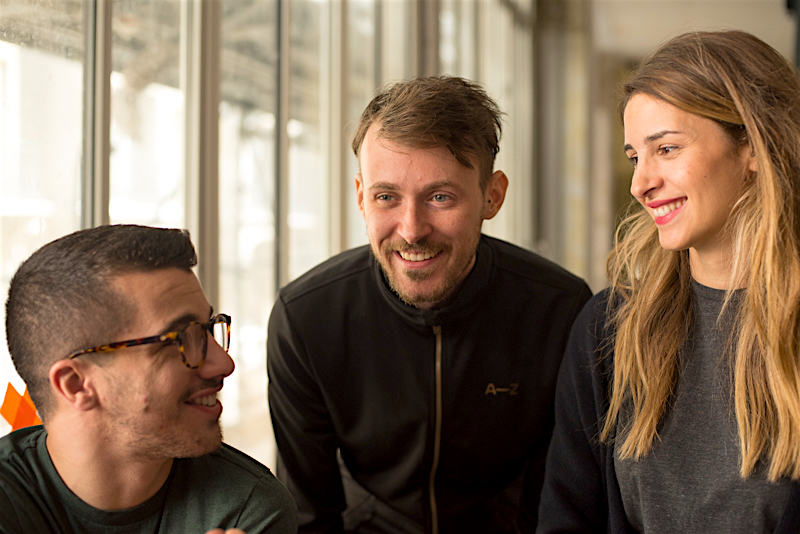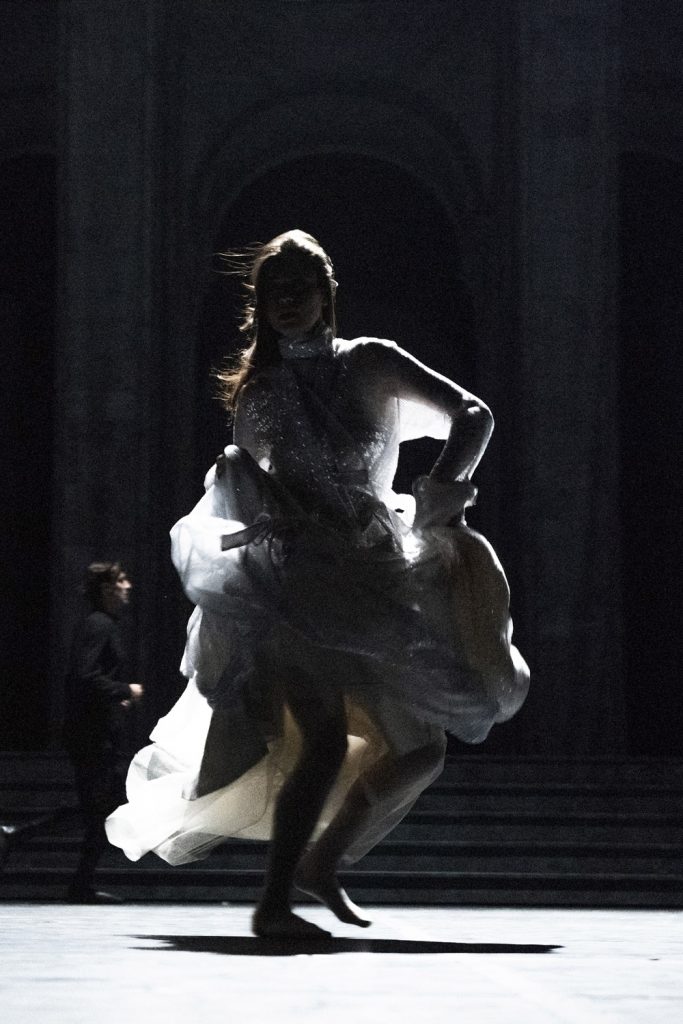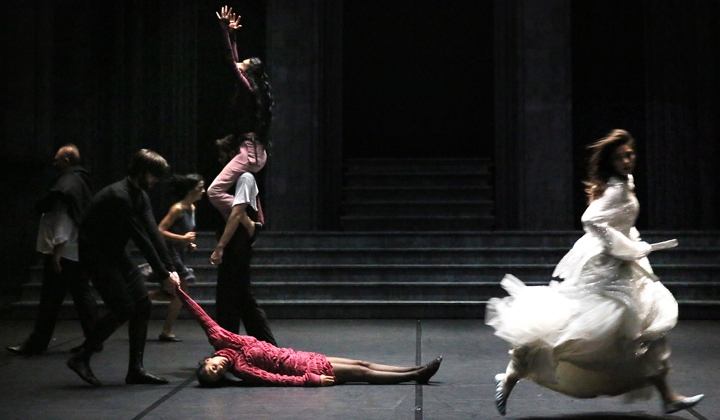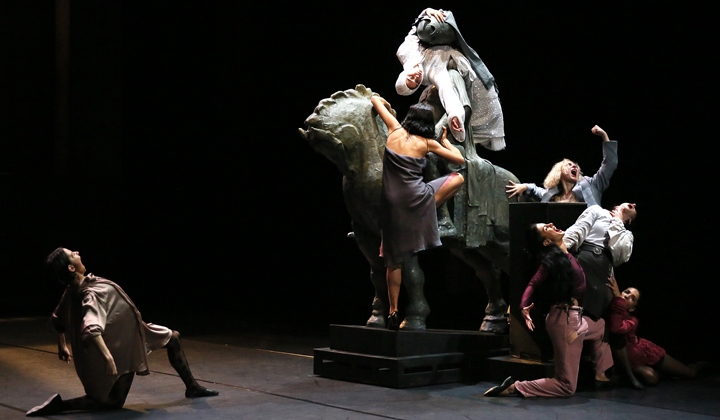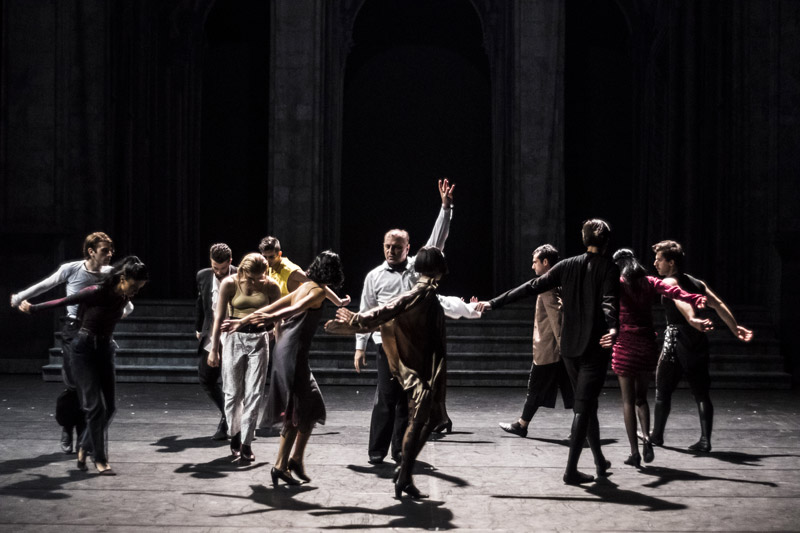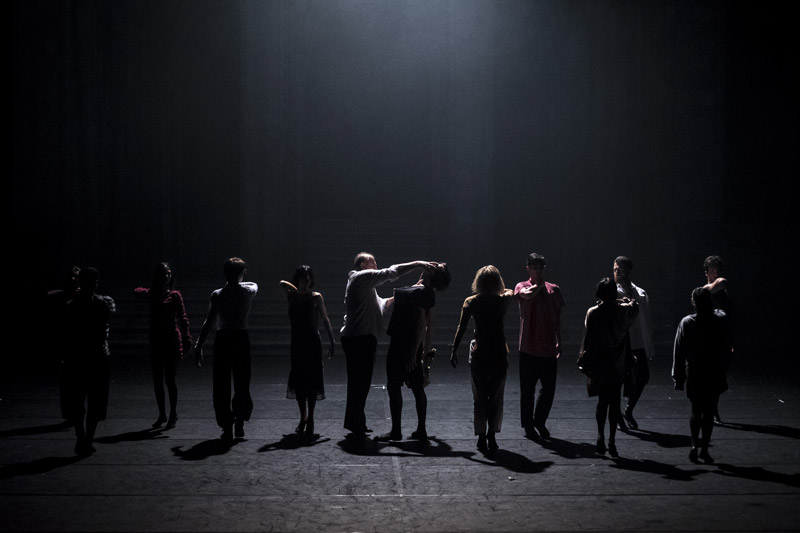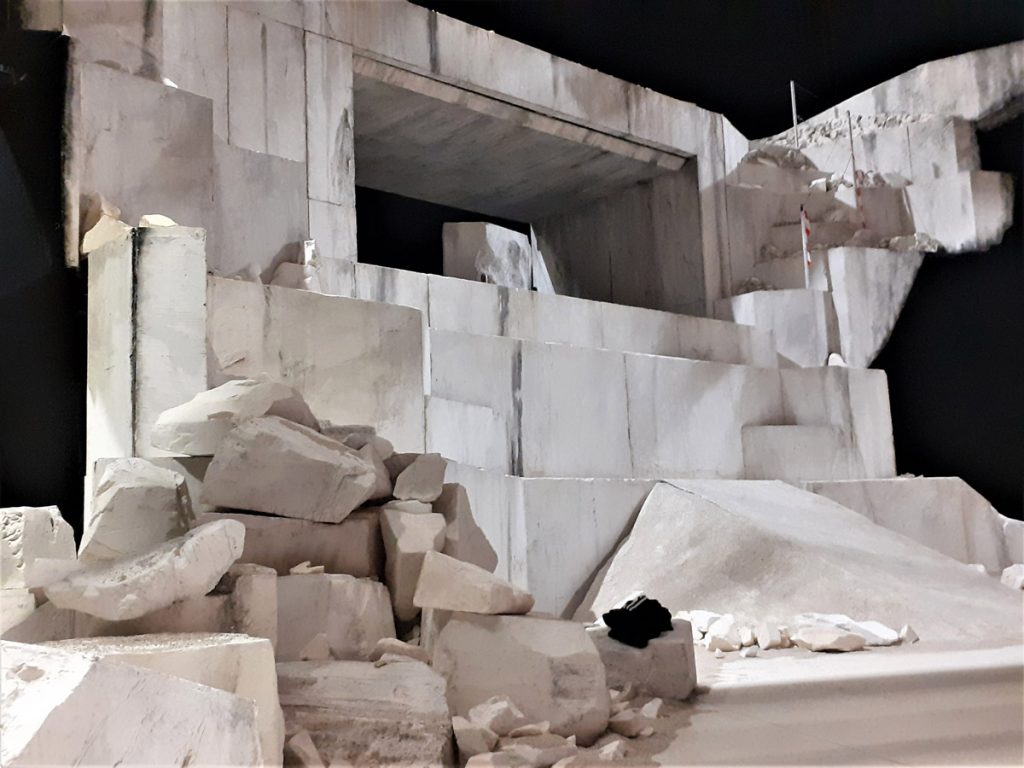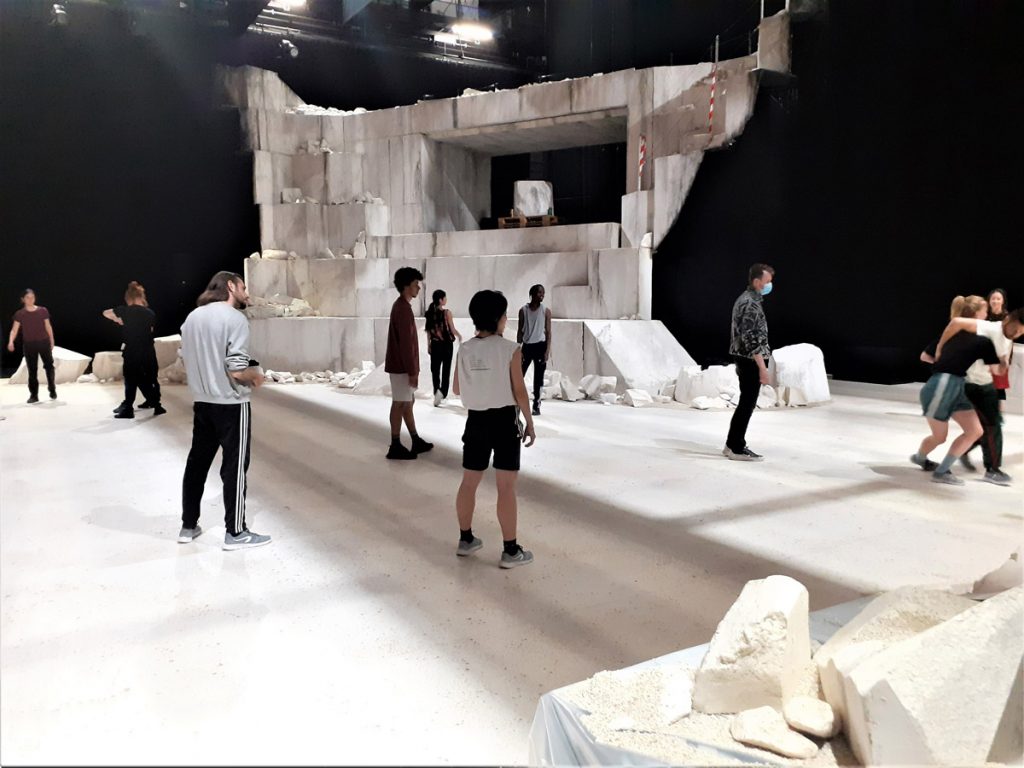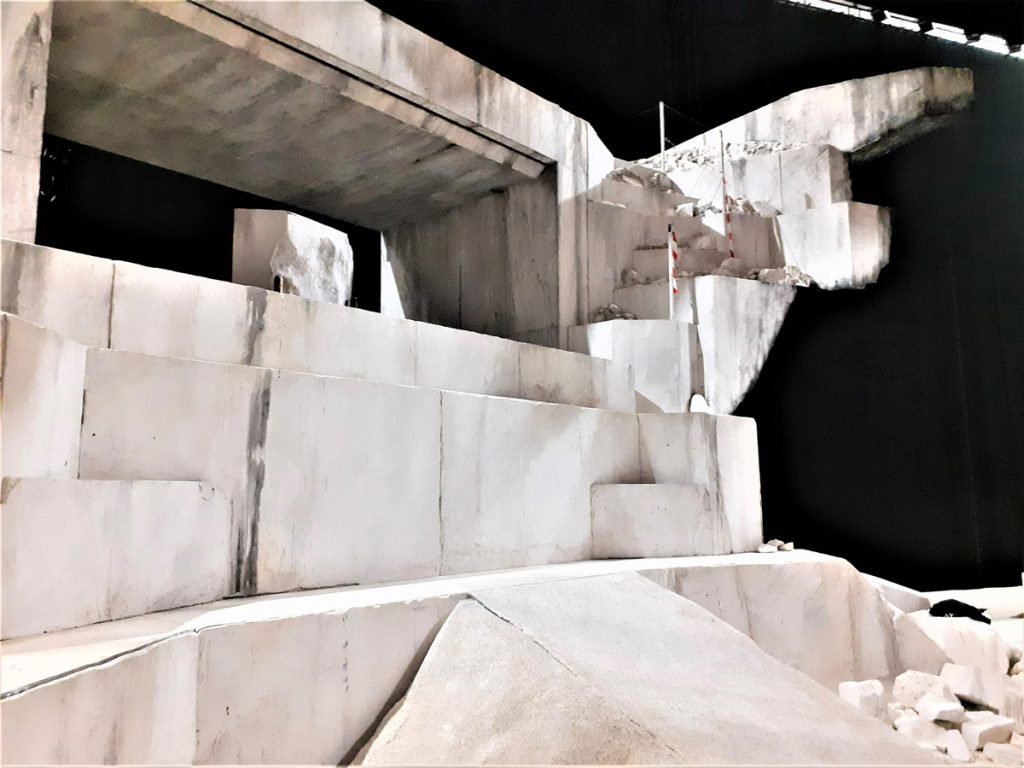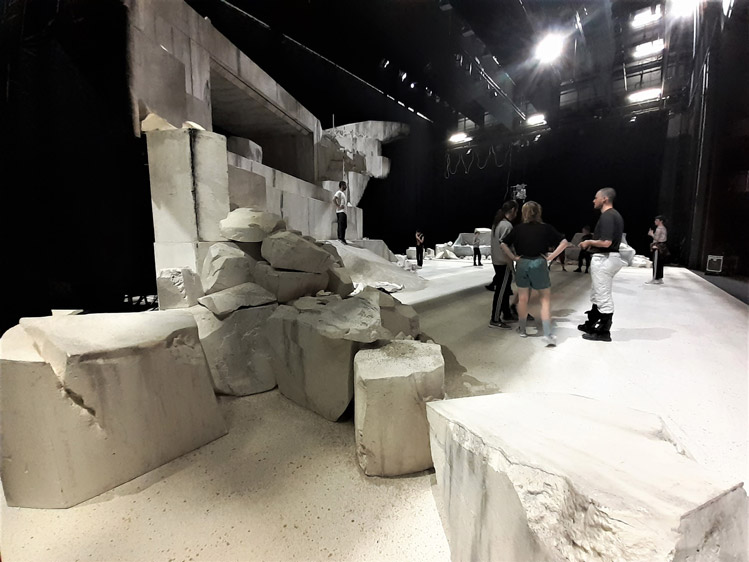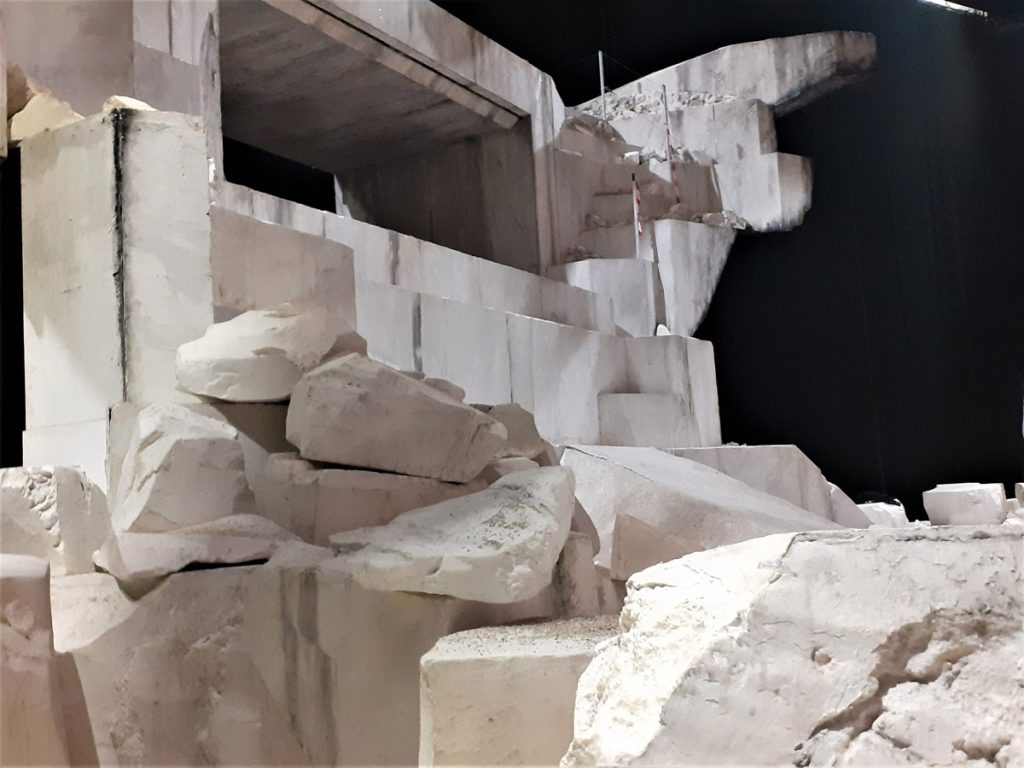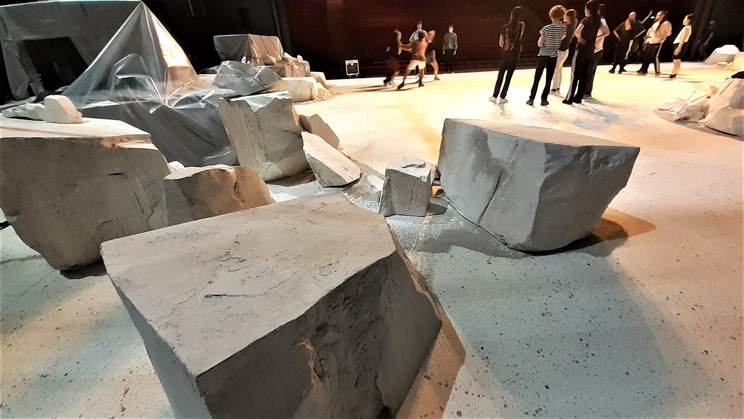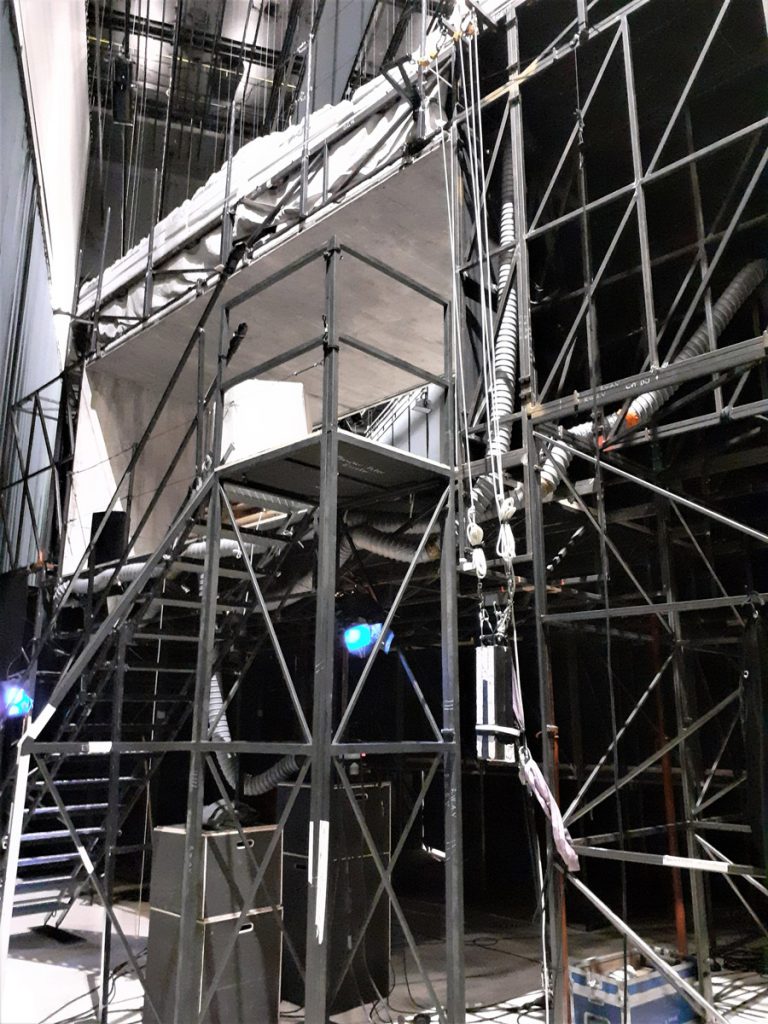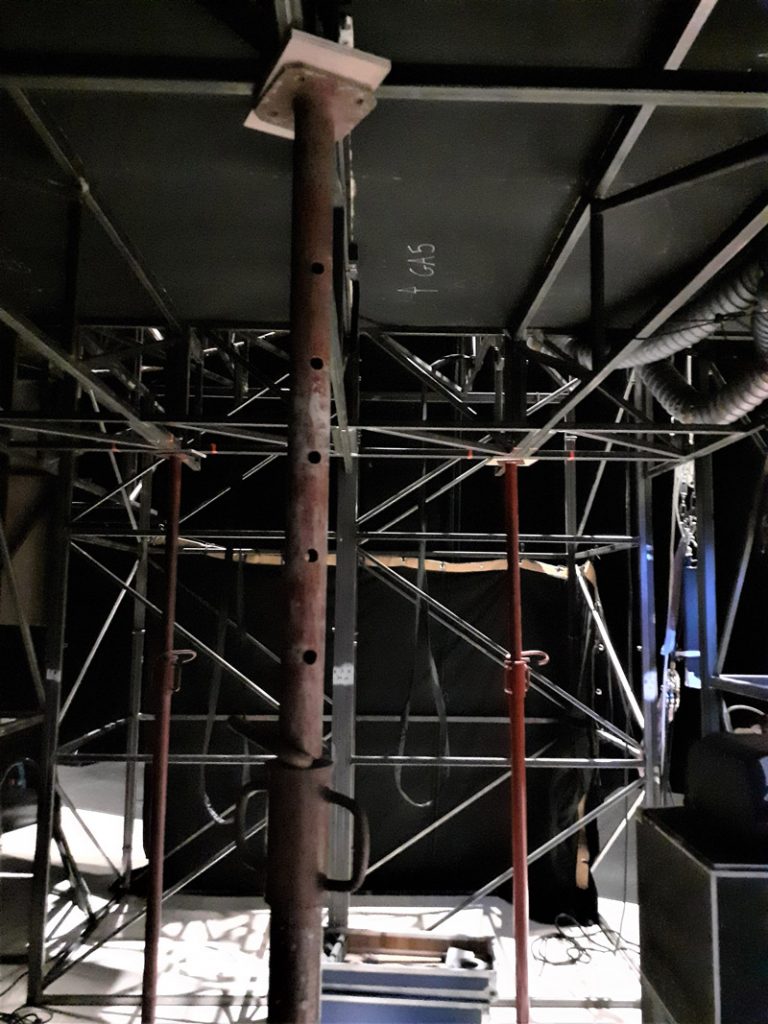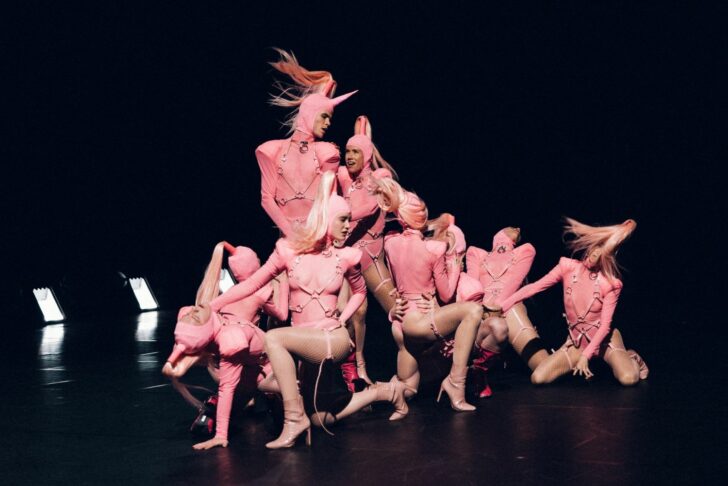The cat-and-mouse game with tradition also leads (LA)HORDE onto a terrain that arises from the tradition of the Ballet National itself: the conception of multi-part pieces created by different choreographers. A mixed evening with pieces by Balanchine, Hans von Manen, and perhaps Cunningham or Marco Goecke can be found in the seasonal program of every classical-modern company. In Marseille, however, nothing like this has ever been done before. Brutti, Debrouwer, and Harel are changing that, too. They have already put together two such programs, one called Roommates. This should make clear what the three of them are up to: They are putting together different eras and dances in an exhibition or a community. Only who would have thought that this exercise in style could include a piece by Lasseindra Ninja? The queen of the Parisian voguing scene has understood very well what the new troupe from Marseille is made of and ignites the performers like fireworks. Not one of voguing, but a creation in the spirit of openness to the pleasure of the body. (LA)HORDE believe that dance must be fun and want to show that they are open to all styles. And so they began their exploration of the dance landscape together with Lucinda Childs. In 2009, Childs had written a piece called Tempo Vicino specifically for the ensemble – at that time under the direction of Frédéric Flamand. But the bodies are different today, as is the spirit, and back then, things did not click between the troupe and Childs. Even given the precise mechanics and rhythmics of the piece, the dancers in 2009 still seemed a bit like naughty children stuffed into their Sunday suits for church.
During the lockdown, they met regularly with Childs via Zoom and soon found that they understood her style much better. The result of this improved understanding was showcased in Roommates, their second mixed evening, which they presented in May 2022. Childs was very generous, opening to them the complete treasure trove of her 60-year career as a choreographer: “Pick what you like!” They chose Concerto, a piece now almost thirty years old, set to pounding spinet rhythms by Henryk Gorecki. Usually it becomes a purist exercise in a state of consciousness floating somewhere in higher, abstract realms. The miracle of Marseille was that a kind of twilight of the gods was conjured up here, a furor from the underworld, where bodies and souls surge and roar, and where pure drill turns into a battle between body and soul: essentially Gorecki’s intention with his concert of rage and rebellion. In Marseille, they embody this without losing the precision or concentration intended by Lucinda Childs. which has to do with the fact that Childs’ Concerto is seen here as a Roommate, that is a roommate in a shared apartment in the history of dance, which must have not only surprised Childs herself, but also likely enraptured her. Presented with it, for example, is the duo Les Indomptés by French choreographers Claude Brumachon and Benjamin Lamarche, which was created a year prior to Concerto. It is a hot-blooded plea for love between men who seem to plunge into some kind of abyss with every movement. With these two works, (LA)HORDE also showcases the pieces that shaped them as a dance audience in their youth.
They also make clear who they consider to be a permanent fixture on today’s scene: Oona Doherty, for example, who hails from Belfast in Northern Ireland and, through her streetlife appeal, exudes some of the authenticity of socially disadvantaged neighborhoods and their longing for gentleness and hope – like a Ken Loach film, some say. Her solo Hope Hunt and the Ascension into Lazarus was turned into a unisono for the entire ensemble – a feat that Doherty never thought possible. Thus, (LA)HORDE have repeatedly shown that no mental block stands a chance with them. They even help to remove mental blocks in others. “Right after we were nominated, we asked Oona if she would like to work with the troupe,” they say – and were rebuffed: “I don’t do classical dance!” The word ballet shocked Oona, but there was a happy ending: “She finally came to our office; then we arranged a meeting with the dancers, almost against her will – and were able to convince her to spend an afternoon in the studio with the troupe. At the end she had tears in her eyes and said, I want to do Lazarus, with the whole company.”


